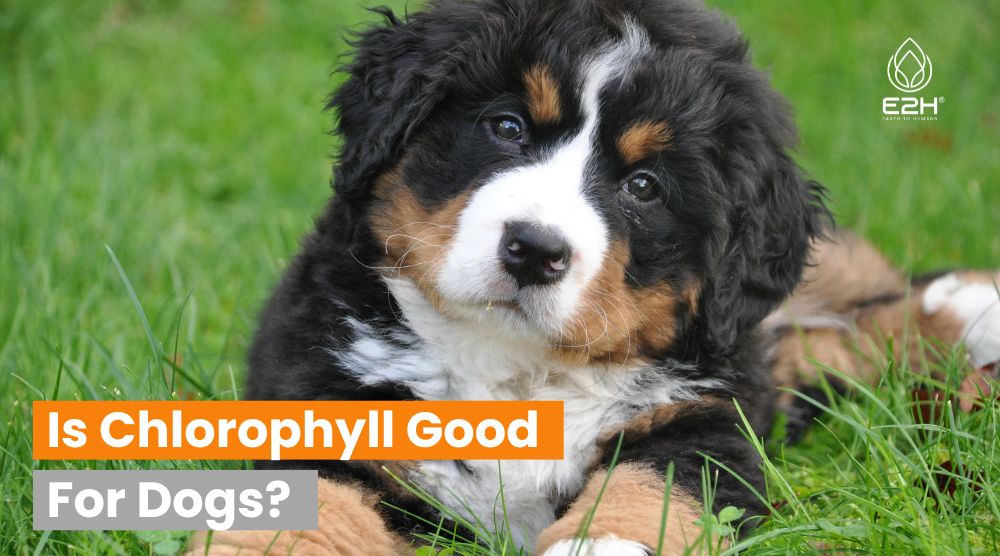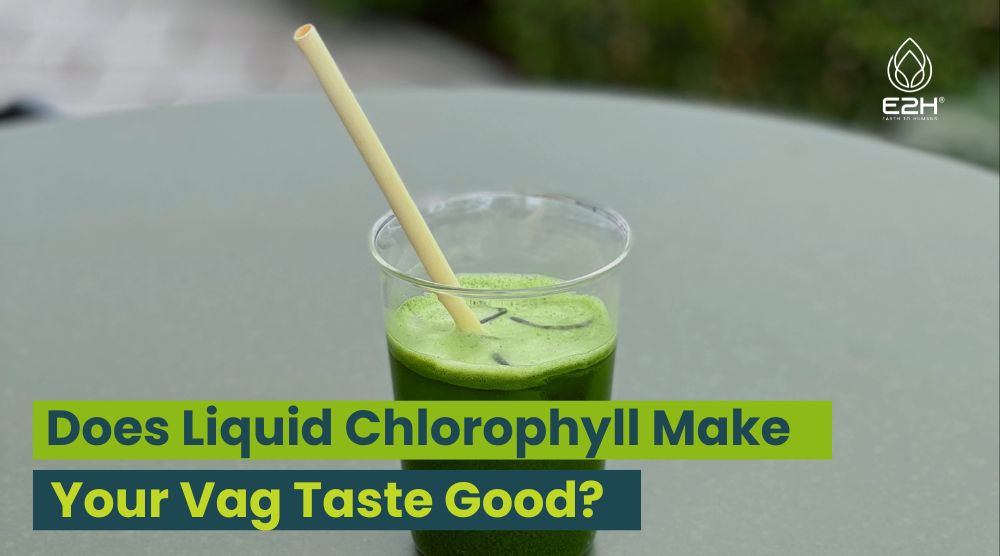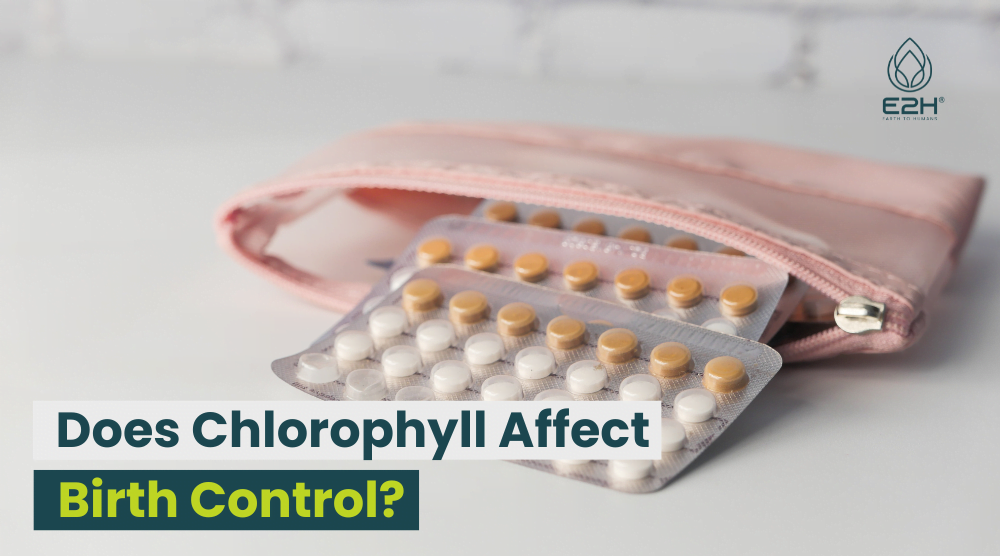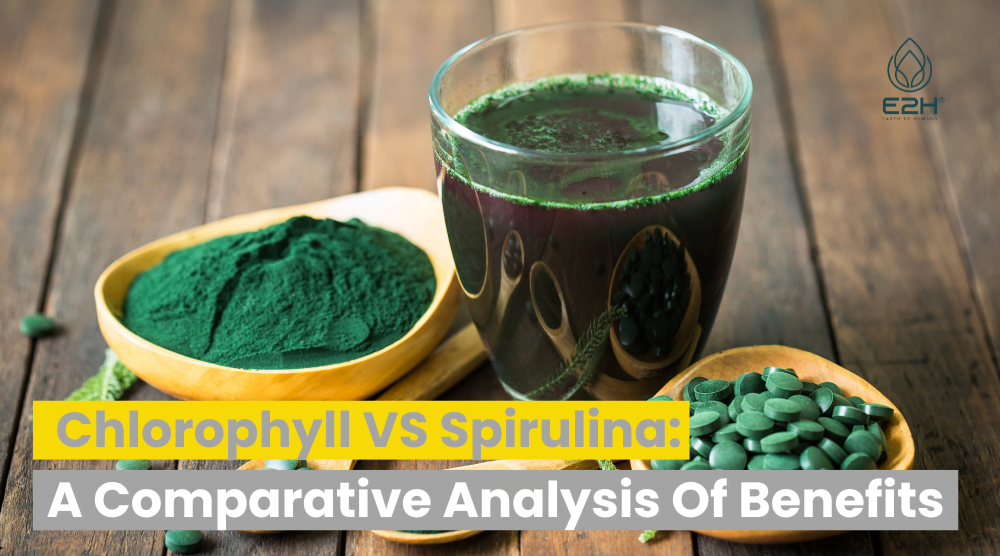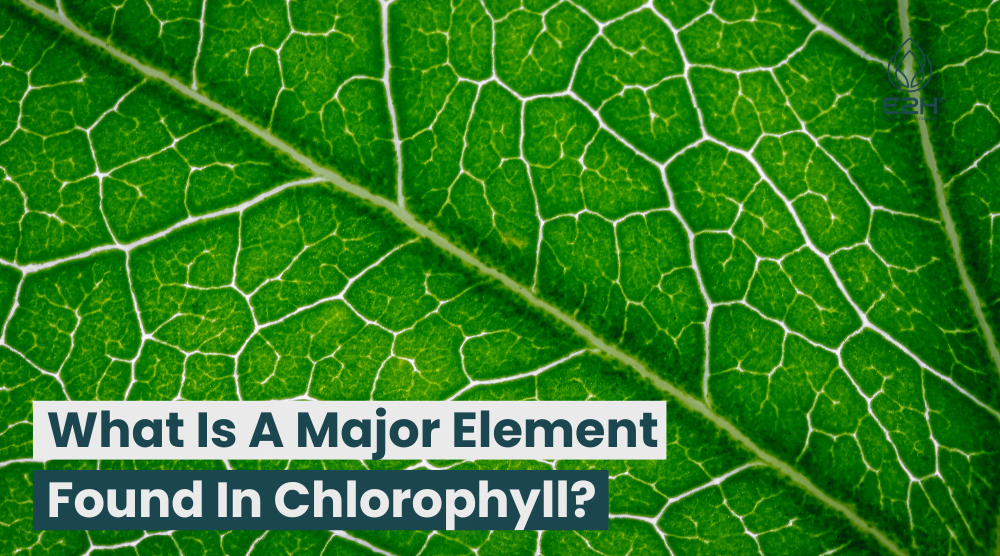Is Chlorophyll Good For Dogs: Yes, chlorophyll can be a beneficial supplement for dogs. It has the potential to freshen breath, aid in digestion, boost the immune system, and help with detoxification. As long as it is introduced gradually and monitored for any potential side effects, chlorophyll can be a safe and effective supplement for dogs.
What are the Health Benefits of Chlorophyll for Dogs?
While there is limited scientific research on the benefits of chlorophyll specifically for dogs, many dog owners and veterinarians believe that it can be a beneficial supplement for a variety full range of reasons. Here are some of the potential benefits of chlorophyll for dogs:
- Freshens Breath: Chlorophyll is often used as a natural remedy to help freshen dogs’ breath. It works by neutralizing the odor-causing bacteria in the mouth, which can lead to bad breath.
- Aids in Digestion: Chlorophyll has been shown to help aid in digestion by reducing inflammation in the gut and promoting the growth of beneficial gut bacteria. This can be particularly helpful for dogs with digestive issues, such as constipation or diarrhea.
- Boosts Immune System: Chlorophyll is a powerful antioxidant that helps to protect cells from damage caused by free radicals. This can help to boost the immune systems and reduce the risk of chronic diseases in dogs.
- Helps with Detoxification: Chlorophyll has natural detoxifying properties that can help to eliminate toxins from the body. This can be particularly helpful for dogs that are exposed to environmental toxins, such as pollution or pesticides.

What are the Risks and Side Effects of Chlorophyll for Dogs?
While chlorophyll is generally considered safe for dogs, there are some potential risks and side effects to be aware of. Here are some of the most common risks and side effects of chlorophyll for dogs:
- Stomach Upset: Some dogs may experience stomach upset or diarrhea when first introduced to chlorophyll. This is typically a temporary side effect that resolves on its own.
- Allergic Reactions: Some dogs may be allergic to chlorophyll, just as they can be allergic to other plant-based products. Signs of an allergic reaction may include itching, swelling, and difficulty breathing.
- Interference with Medications: Chlorophyll can interfere with the absorption of certain medications, such as blood thinners. If your dog is taking any medications, it is important to consult with your veterinarian before adding chlorophyll to their diet.
- Overdose: While it is rare, it is possible for dogs to overdose on chlorophyll if they are given too much. Symptoms of an overdose may include vomiting, diarrhea, and lethargy.
How Does Chlorophyll Work for Dogs in Heat?
There is no scientific evidence to suggest that chlorophyll can help dogs and cats be in heat. The heat cycle is a natural biological process that all female dogs and cats go through, and it typically lasts for around three weeks.
While chlorophyll has been shown to have a variety of potential health benefits for dogs, it is not a treatment or remedy for the heat cycle. If your dog is experiencing discomfort or other symptoms during their heat cycle, it is important to speak with your veterinarian for proper guidance and treatment options.
Natural Ways To Add More Chlorophyll To Your Dog’s Diet
There are several natural ways to add more chlorophyll to your dog’s diet. One natural way to is to include more leafy green vegetables in their meals, such as spinach, kale, and broccoli. You can also add wheatgrass pet grass, or barley grass to their food or provide them with chlorophyll-rich supplements such as algae such as chlorella or spirulina algae.
Another option is to offer your dog fresh herbs such as parsley or cilantro, plants which are more nutrients also high in chlorophyll. When introducing these foods to diet, be sure to do so gradually and monitor for any potential digestive issues.
Heat Cycle of Female Dogs in a Nutshell
The heat cycle, also known as estrus, is a natural biological process that occurs in all female and male dogs together. It typically lasts for around three weeks and involves several stages, including proestrus, estrus, and diestrus. During this time, female dog may exhibit symptoms such as swelling of the vulva, increased urination, and behavior changes.
It is important to monitor your dog’s body very closely during their heat cycle, as they have more energy and your dog may be at risk for unintended breeding and certain health issues. If you have any concerns or questions about your dog’s heat cycle, it is recommended to consult with your veterinarian for guidance and advice.
How Can You Incorporate Chlorophyll into Your Pet’s Diet?
There are several ways to incorporate enough chlorophyll back into your pet’s diet. One option is to add leafy green vegetables such as kale or spinach to their meals. You can also mix in wheatgrass or barley grass powder, or add supplements such as chlorella or spirulina.

Fresh herbs and plants like parsley and cilantro are also high in chlorophyll and can be added to your pet’s food. When introducing these plants, nutrients and foods to your pet’s diet, start with small amounts and monitor their reaction. It is also important to consult with your veterinarian before adding any supplements or nutrients to your pet’s diet.
When Not to Use Chlorophyll for Dogs in Heat?
While chlorophyll has many potential health benefits for dogs, it is not a treatment or remedy for the heat cycle. If your dog is experiencing discomfort or other symptoms during their heat cycle, it is important to speak with your veterinarian for proper guidance and treatment options.
Additionally, it is not recommended to use chlorophyll supplements or other natural remedies to induce or alter the heat cycle, as this can be dangerous and lead to many health benefits and complications. As with any supplement or treatment, it is important to consult with your vet immediately your veterinarian before using chlorophyll for your dog.
How To Feed Your Dog More Chlorophyll?
There are several ways to feed your dog more chlorophyll. You pets can add leafy green vegetables like spinach and kale to their meals, eat grass or wheat grass or mix in wheatgrass or barley grass powder. Supplements such as algae such as chlorella and spirulina are also high in chlorophyll and can be added to your dog’s food.
Fresh herbs like parsley and cilantro are another great food source full of chlorophyll and can be sprinkled on top of your dog’s food. When introducing these foods to your dog’s diet, start with small amounts and monitor for any potential digestive issues. It is also important to consult with your veterinarian before adding any supplements to diet.
Can I put liquid chlorophyll in my dogs water?
While some pet and dog owners may choose to add liquid chlorophyll to their water bowl or their dog’s water, it is important to do so with caution. Some pets, cats and dogs may not like the taste green color or smell of large quantities of chlorophyll in their water and some pets may refuse to drink it.

If too much chlorophyll is added to their water, it can cause digestive upset or other health issues. It is recommended to consult with your veterinarian before adding any supplements or additives to your dog’s water or food. Your veterinarian can provide guidance on the appropriate chlorophyll dosage and ensure that it is safe and beneficial for your dog.
Does chlorophyll help with dog breath?
Chlorophyll has been suggested as a potential remedy for dog breath due to its ability to absorb energy neutralize odors. Some pet owners may choose to give their dog chlorophyll supplements or add chlorophyll-rich foods to their diet in an effort to improve their breath.
However, there is limited scientific evidence to support the effectiveness of chlorophyll for this purpose. If your dog has persistent bad breath, it may be a sign of an underlying dental or health issue, and it is recommended to consult with your veterinarian for proper diagnosis and treatment.
Can animals digest chlorophyll?
Yes, animals can digest chlorophyll. Chlorophyll is a natural compound found in many plants and is a common component of a healthy diet for many animals, including dog. Chlorophyll is broken down and absorbed in the digestive tract and can provide a range of health benefits, including antioxidant and anti-inflammatory effects.
However, it is important to consult with your veterinarian before adding any supplements or additives to your pet’s diet. Some animals may have sensitivities or allergies to certain food sources or ingredients, and it is important to ensure that any additions to their diet are safe and beneficial.
Do chlorophyll improve red blood cells?
Chlorophyll has been suggested to have potential benefits in improving red blood cells. It has been found to have a similar molecular structure to hemoglobin, the protein responsible for carrying oxygen in red blood cell.
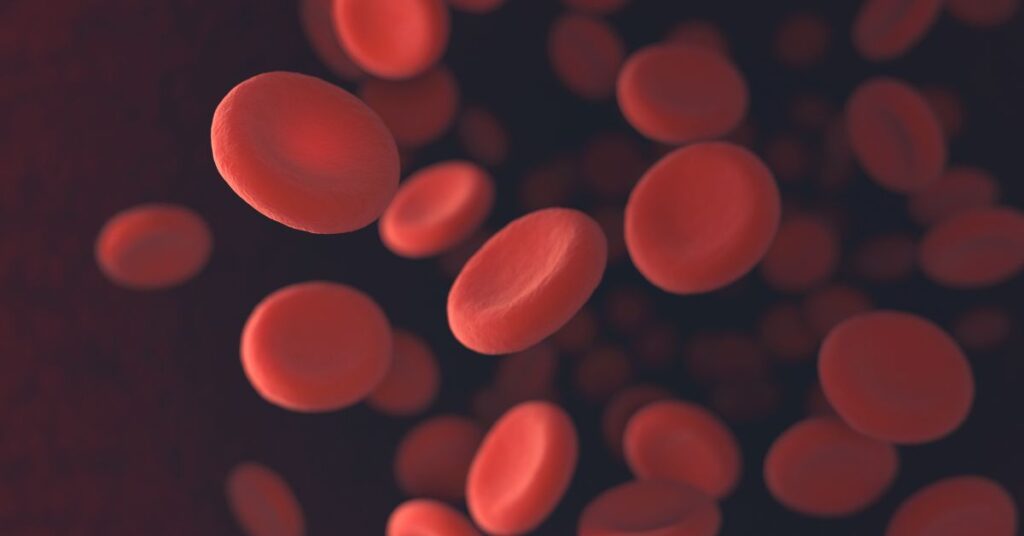
Some studies have shown that chlorophyll may improve red blood cell production and oxygen delivery, as well as help to detoxify the blood and support immune function. However, more research is needed to fully understand the potential benefits of chlorophyll on red blood cells. As with any supplement or treatment, it is important to consult with your veterinarian before using chlorophyll for your pet.
Can Chlorophyll use as nutritional supplement for dog?
Yes, chlorophyll can be used as a nutritional supplement for dogs. Chlorophyll is a natural compound found in many plant-based foods, mixed seaweed supplement and can provide a range of health benefits for dogs. Chlorophyll supplements can be added to diet to support healthy digestion, reduce inflammation, and improve overall health and well-being.
However, it is important to consult with your dog owner or your dog or veterinarian before adding any supplements or additives to diet. Your veterinarian can provide guidance on the appropriate dosage of powerful supplement and ensure that it is safe and beneficial for your dog’s specific health needs.
Best Natural Supplements for Dogs (3 Powerful Antioxidants SAVE Our Dogs Health)
FAQs
Can chlorophyll be toxic to dogs?
While chlorophyll is generally considered safe for dogs, it is possible for them to overdose on it if they are given too much. It is important to follow the recommended dosage instructions and monitor your dog for any signs of an overdose.
How should I introduce chlorophyll to my dogs’ diet?
It is important to introduce chlorophyll to your dogs diet slowly and gradually. Start with a small amount and monitor your dog’s reaction before increasing the dosage. It is also a good idea to consult with your veterinarian before adding any supplements to your dogs’ diet.
Can chlorophyll help with my dog’s bad breath?
Yes, chlorophyll is often used as a natural remedy to help freshen dogs and cats’ breath. It works by neutralizing the odor-causing bacteria in the mouth, which can lead to bad breath.
Is chlorophyll a good supplement for dogs with digestive issues?
Chlorophyll has been shown to help aid in digestion by reducing inflammation in the gut and promoting the growth of beneficial gut bacteria. This can be particularly important compound helpful for dogs with digestive issues, such as constipation or diarrhea.
Conclusion
In conclusion, chlorophyll can be a beneficial supplement for dogs when used appropriately. It has the potential to freshen breath, aid in digestion, boost the immune systems, and help with detoxification. However, it is important to introduce chlorophyll to your dogs’ diet slowly and gradually, and to monitor them for any potential side effects.
If you are considering adding a chlorophyll supplement to your dogs’ diet, it is recommended to consult with your veterinarian to ensure it is a safe and appropriate supplement for your furry friend.
